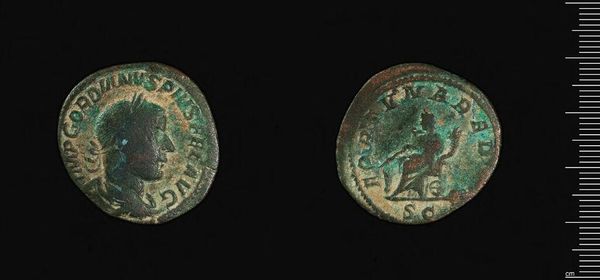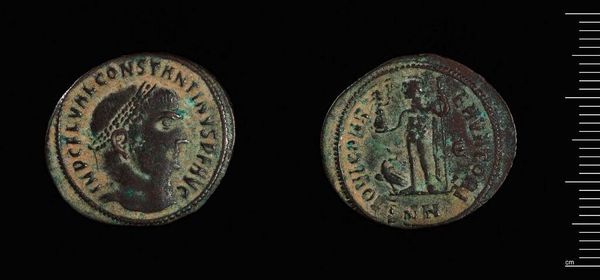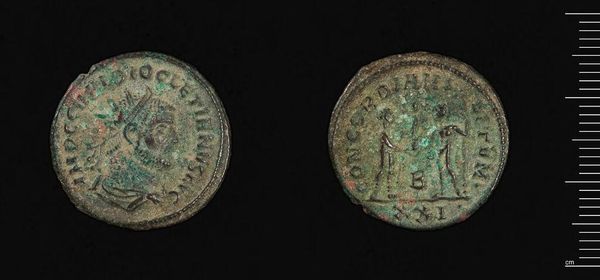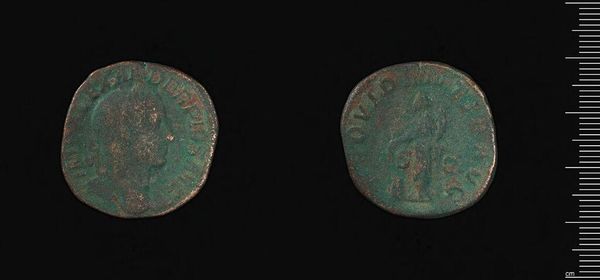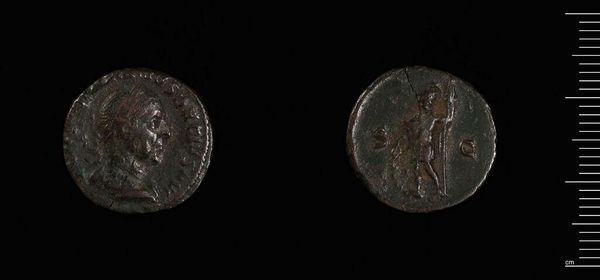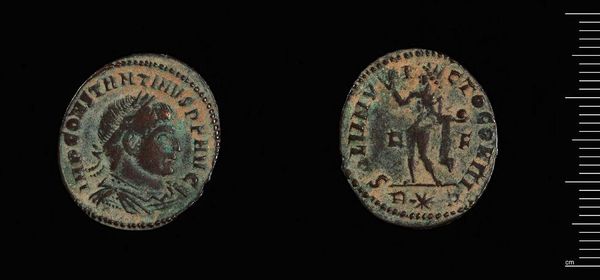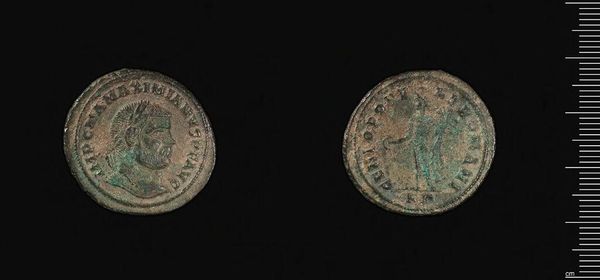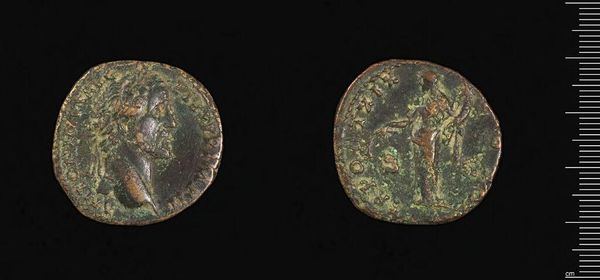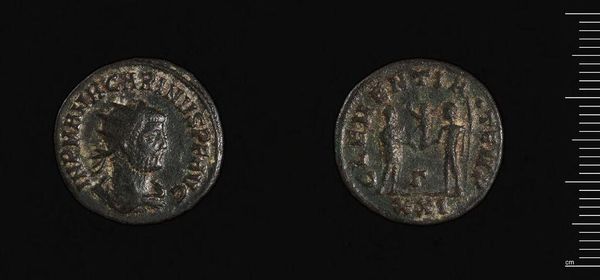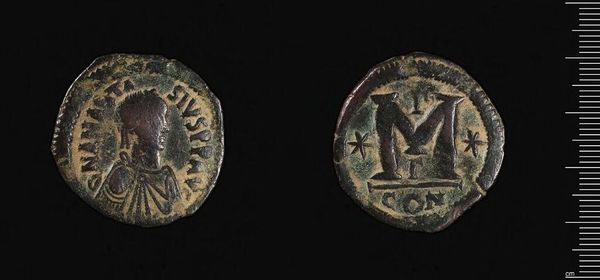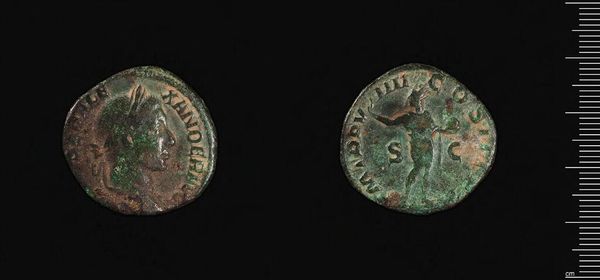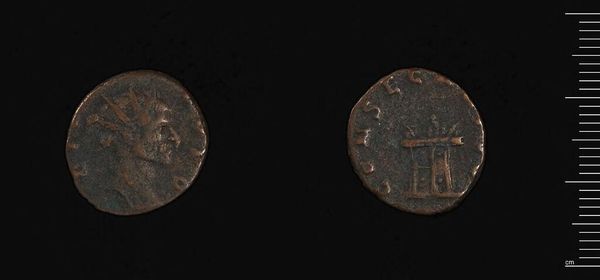
Dimensions: 3.47 g
Copyright: CC0 1.0
Curator: Here we have a Follis of Crispus, from Ticinum. It's a bronze coin featuring Crispus, who was the son of Constantine the Great. What are your initial thoughts? Editor: Immediately, I am struck by the figure on the reverse side—a military figure, perhaps? It feels almost like a protective deity. Curator: Precisely. The figure represents a victorious soldier, indicative of imperial power. Consider the historical context—Crispus's role in solidifying Constantine's reign. Editor: The symbols speak volumes. The military figure carries the emotional weight of dominance and control, reflecting the narratives of power within the Roman Empire. Curator: And these images, circulated widely, reinforce the political ideologies of the time. It's a fascinating intersection of art and political strategy. Editor: Indeed. The symbols are powerful tools for shaping perceptions and perpetuating narratives of authority. Curator: It is amazing how such a tiny object can reveal so much about the social and political landscape of an empire. Editor: It really makes one think about the impact of ancient symbols on modern societies.
Comments
No comments
Be the first to comment and join the conversation on the ultimate creative platform.
